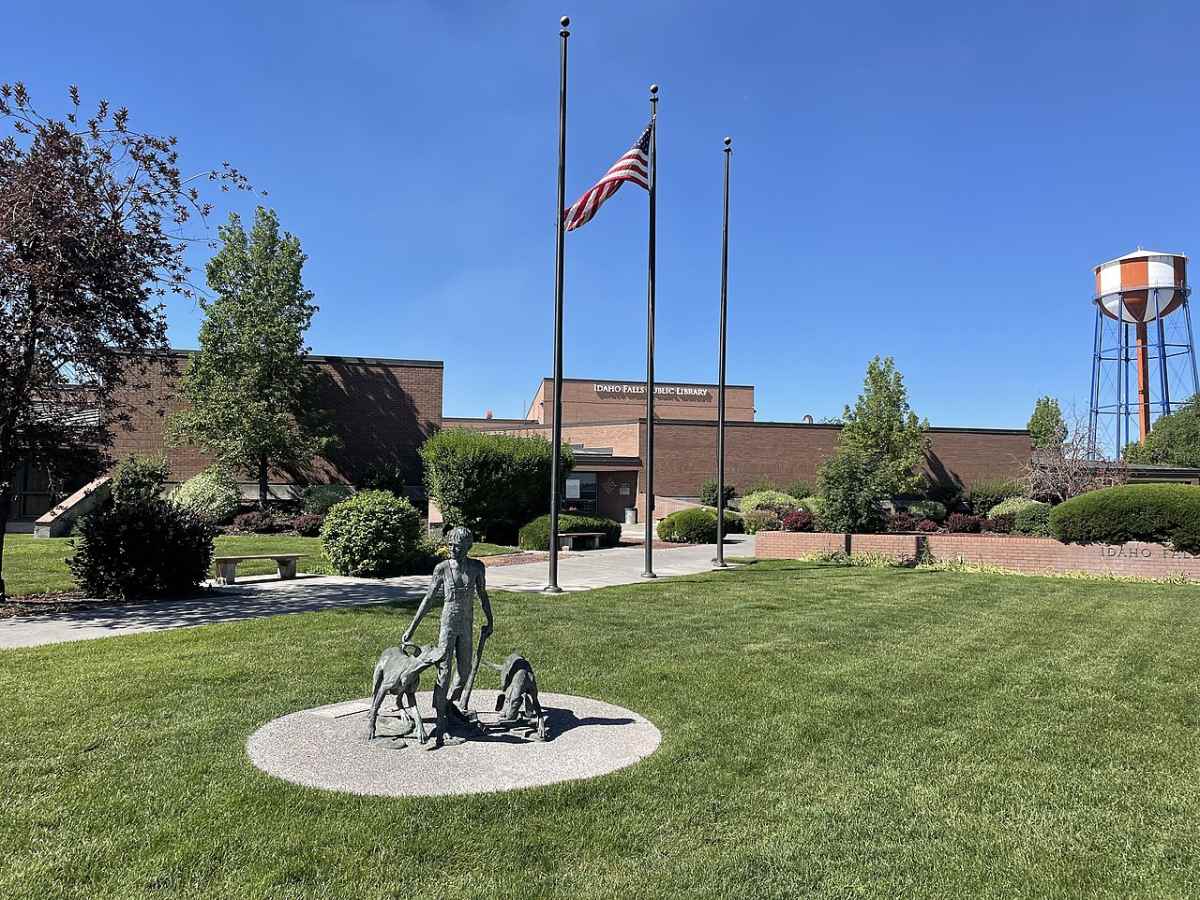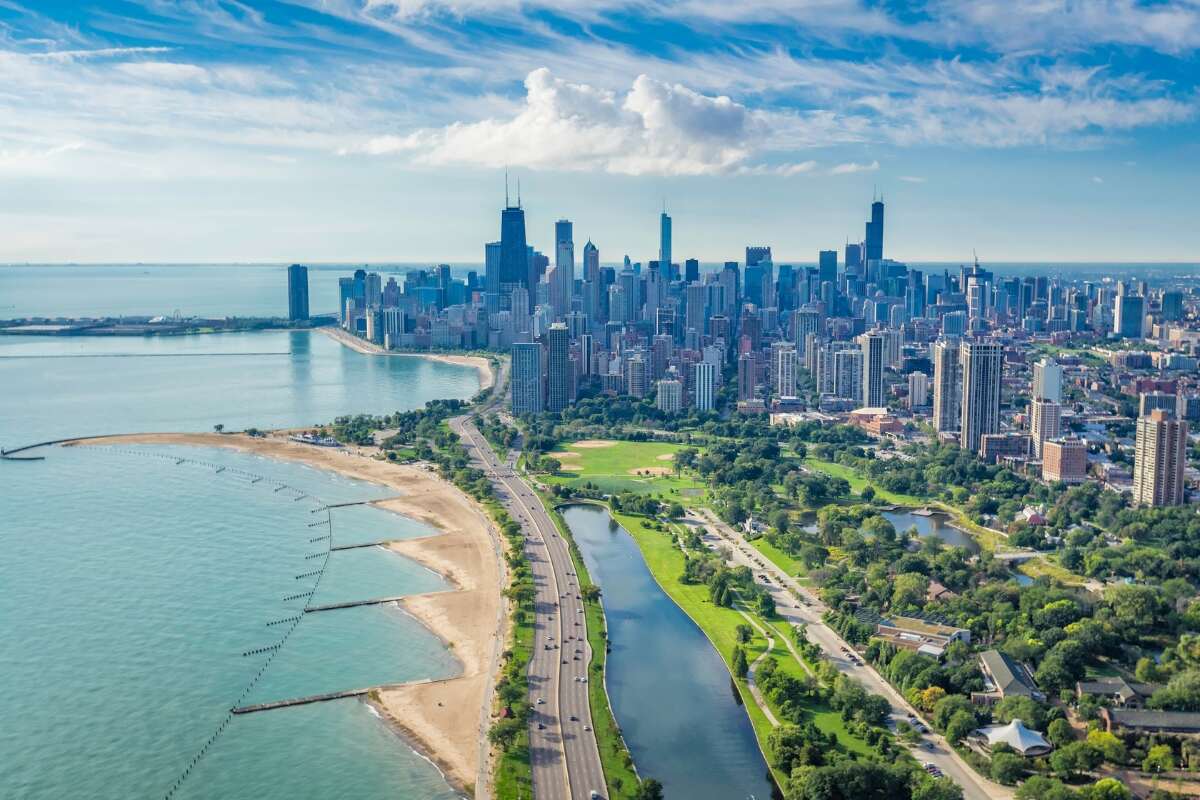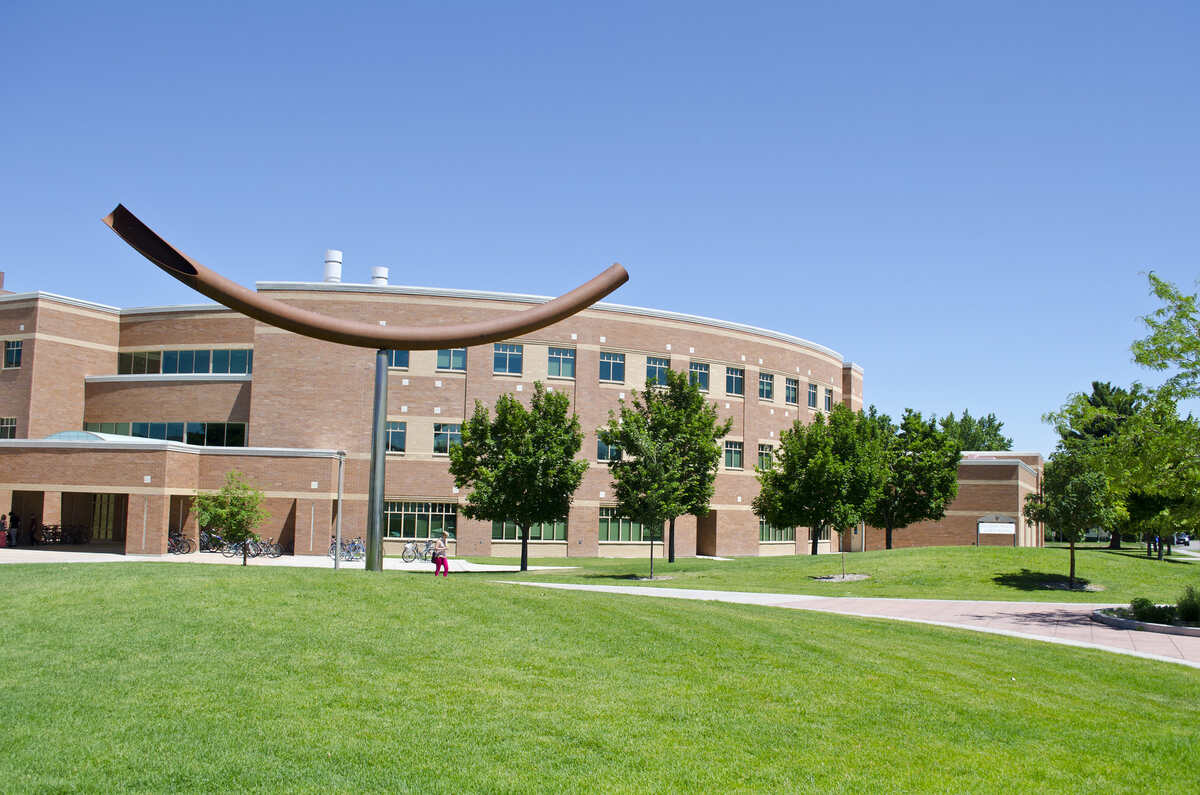
There is no one-size-fits-all approach to lawn care in Montana. The state is home to two different climate zones, courtesy of the Continental Divide that runs through it. Our guide to the best grass seed for Montana can help create the perfect lawn wherever you live.
Check out our section on choosing the best grass type for your Montana lawn if you’re short on time.
Montana’s Climate
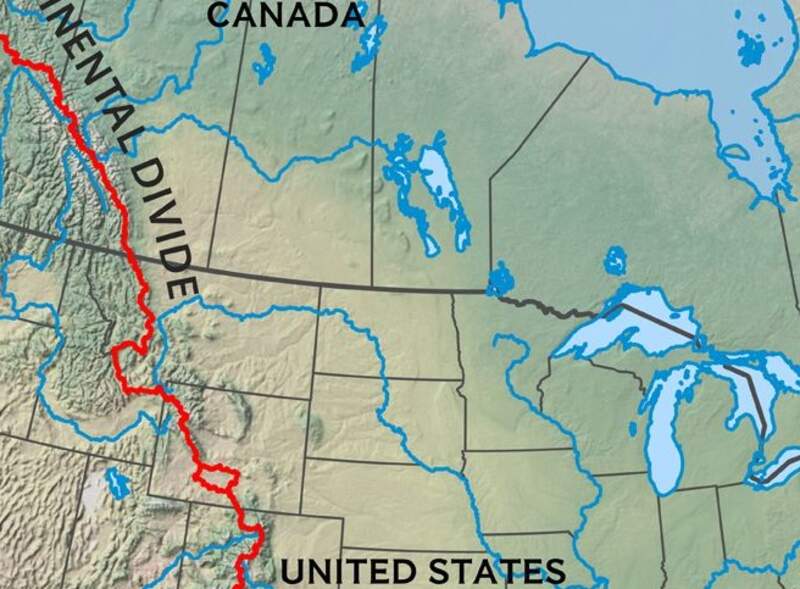
Montana’s climate is affected by its geographical diversity, most notably the Continental Divide. This mountainous range runs along the border of Montana and Idaho, then turns north towards Glacier National Park and Canada.
The mountainous western side has warmer, if more snowy winters, cooler summers, and more precipitation. The central and eastern portions, part of the Northern Great Plains, are drier, with hotter, though less-humid, summers and winters that can be bitterly cold.
We’ll explain which grasses work best on either side of the Divide to grow a healthy lawn in the Treasure State.
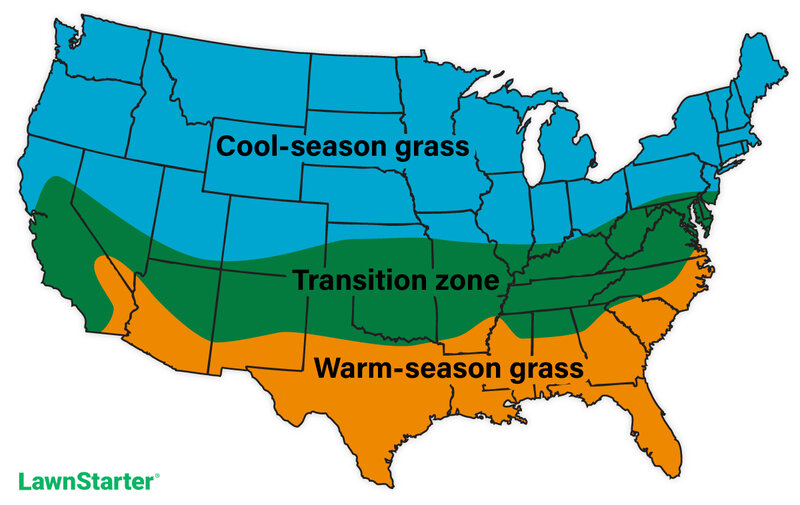
Cool-Season Grasses
Kentucky Bluegrass
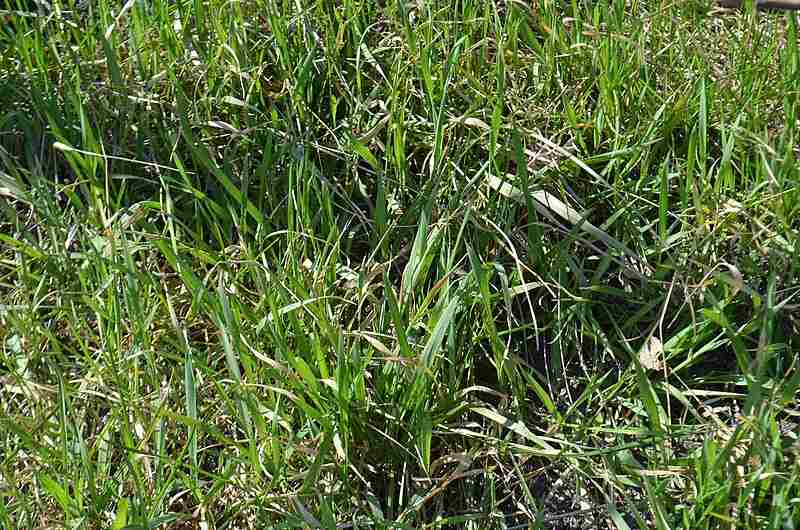
Photo Credit: Ethan2039 / Wikimedia Commons / CC BY-SA 4.0
One of the most popular grasses in the United States, Kentucky bluegrass (KBG) has a high tolerance for Montana’s cold winters and tolerates foot traffic well. It’s also a good choice for fire-resistant landscaping if you live near woodlands. However, it needs more water than other grasses, so KBG is not a good choice for semi-dry areas in the east.
Classification: Cool-season grass
Spreads by: Rhizomes
Shade tolerance: Low
Drought tolerance: Moderate
Foot traffic tolerance: Moderate
Maintenance needs: Moderate mowing frequency and high fertilization needs.
Mowing height: Set mowing height between 2.5 and 3 inches.
Potential for disease: Moderate to high; prone to several diseases, such as dollar spot, leaf spot, necrotic ring spot, summer patch, and stripe smut.
Soil pH: 6-7.5
Soil type: Performs best in well-drained, heavy soils with high fertility.
Other notes: For general use, Montana State University’s planting guide suggests a mixture of Kentucky bluegrass, creeping red or Chewings fescue, and perennial ryegrass.
Grass Seed Options:
– Jonathan Green (11970) Blue Panther Kentucky Bluegrass Grass Seed (3 lbs.)
– SeedRanch Midnight Kentucky Bluegrass Seed (5 lbs.)
– Jacklin Seed – Biltmore Blue Blend – 100% Kentucky Bluegrass (5 lbs.)
Fine Fescues
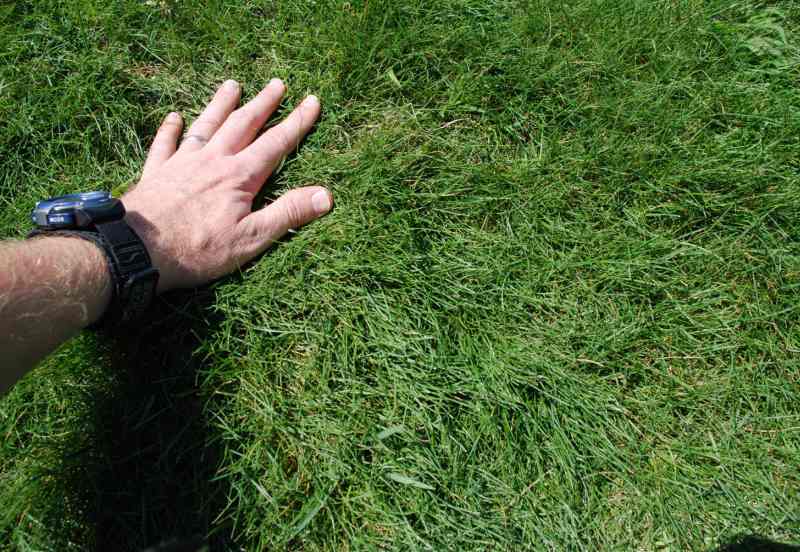
Aaron J. Patton, Ph.D. / Turfgrass Extension Specialist at Purdue University
These fine-leaved cool-season turfgrasses are a good choice for a low-maintenance, shady yard. Fine fescues, like creeping red and Chewings, are typically mixed with Kentucky bluegrass. However, in the semi-dryland areas of eastern Montana, sheep and hard fescues are the best choices, as they have a high tolerance for drought.
Classification: Cool-season grass
Spreads by: Creeping red fescue spreads by rhizomes, while other fine fescues are bunch-type grasses, such as Chewings, hard, and sheep fescues.
Shade tolerance: Moderate to High, depending on species
Drought tolerance: Moderate to High, depending on species
Foot traffic tolerance: Low to Moderate, depending on species
Maintenance needs: Low fertilizer and mowing needs
Mowing height: Set mowing height around 3 inches, depending on species.
Potential for disease: Moderate. Common diseases include red thread, leaf spot, dollar spot, summer patch, and powdery mildew.
Soil pH: 6-6.5
Soil type: Will not perform well in wet soil conditions. Prefers drier soils and tolerates a wide range of soil types and fertility.
Other notes: If your yard has sun and partial shade, use a fine fescue-heavy seed mix with Kentucky bluegrass.
Grass Seed Options:
– Outsidepride Legacy Fine Fescue Grass Seed (5 lbs.)
– Eretz Creeping Red Fine Fescue Seed (choose your size)
– Outsidepride Creeping Red Fine Fescue Grass Seed (25 lbs.)
– Outsidepride Hard Fine Fescue Grass Seed (10 lbs.)
Tall Fescue

Aaron J. Patton, Ph.D. / Turfgrass Extension Specialist at Purdue University
Tall fescue is a bunch-type grass that produces a relatively low-maintenance lawn. It’s also a great choice for a high-traffic yard with kids and pets running around. Turf-type tall fescue’s deep roots help it tolerate heat and drought, and thus it’s a good choice for dry areas in both eastern and western Montana.
Classification: Cool-season grass
Spreads by: Produces short rhizomes but has a bunch-type growth habit
Shade tolerance: Moderate
Drought tolerance: Moderate to High
Foot traffic tolerance: Moderate
Maintenance needs: Frequent mowing. Does not produce significant thatch.
Mowing height: Set mowing height to 2.5 to 3 inches.
Potential for disease: Tolerant of most diseases when properly maintained.
Soil pH: 5.5-6.5
Soil type: Adapted to a wide range of soil conditions, but prefers fertile clay soils with good drainage.
Other notes: Don’t mix tall fescue with other turfgrasses; differing textures and growth will produce an unevenly growing lawn. As tall fescue is a bunch grass, seed heavily to produce a uniform lawn.
Grass Seed Options:
– Triple-Play Tall Fescue Grass Seed Blend (5000 sq ft)
– Eretz Kentucky 31 K31 Tall Fescue Grass Seed (choose your size)
– Pennington The Rebels Tall Fescue Grass Seed Mix (7 lb.)
Perennial Ryegrass
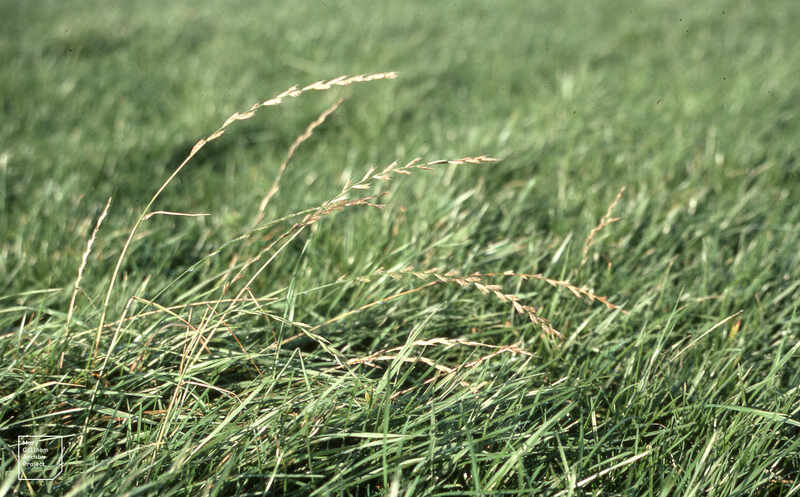
Photo Credit: Dr Mary Gillham Archive Project / Flickr / CC BY 2.0
This bunch-type lawn grass germinates quickly and will be the first to go green each spring. Its fast germination makes it a good companion to slower-growing grasses, like Kentucky bluegrass. It also will stand up to your kids, pets, and Wiffle Ball games.
However, it needs more frequent watering, so it works well with the wetter climate of western Montana. Also, some varieties won’t hold up to Montana’s winter cold, so it’s best to keep perennial ryegrass in a grass mix with other cool-season grasses.
Classification: Cool-season grass
Spreads by: Has a bunch-type growth habit
Shade tolerance: Low
Drought tolerance: Low
Foot traffic tolerance: High
Maintenance needs: Moderate mowing and fertilization requirements. Thatch is not significant.
Mowing height: Set mowing height to 1.5 to 2.5 inches
Potential for disease: High. Common diseases include gray leaf spot, red thread, and leaf spot/melting-out.
Soil pH: Can grow in soils with a pH between 5 and 8, but prefers between 6 and 7.
Soil type: Prefers good drainage and fertility, but can tolerate some poor drainage.
Other notes: Montana State’s revegetation guide says perennial ryegrass is used to seed areas hit by wildfire. The grass’ quick growth stabilizes the soil to halt erosion.
Grass Seed Options:
– Outsidepride Perennial Ryegrass Seed (5 lbs.)
– Eretz ProTurf Perennial Ryegrass Fine Lawn Seed (choose your size)
Warm-Season Grasses
Buffalograss
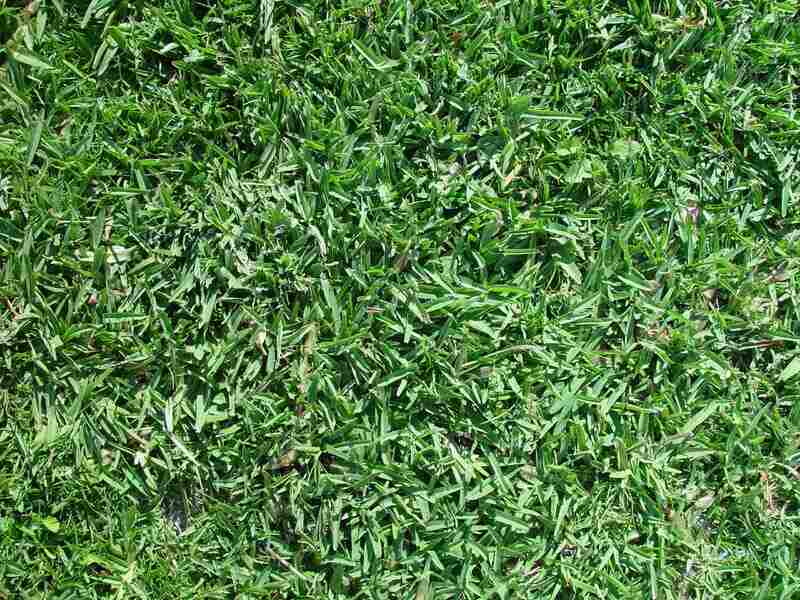
Photo Credit: Pixnio
This warm-season grass may seem to be an odd choice, but the USDA says buffalograss can be found as far south as Louisiana. This native grass of the Great Plains needs little moisture to grow, so it’s perfect for the semi-dryland areas of eastern Montana. It also has a high tolerance for Montana’s winter temperatures.
One downside: Buffalograss can be overtaken by weeds in higher rainfall areas.
Classification: Warm-season grass
Spreads by: Stolons
Shade tolerance: Low
Drought tolerance: High
Foot traffic tolerance: Low
Maintenance needs: Low fertilizer and mowing needs. Requires weed control.
Mowing height: Set the mowing height at 2.5 inches.
Potential for disease: Good tolerance against diseases and insects
Soil pH: 6.5-7.5
Soil type: Native clay soils, not sandy soils
Other notes: If you live near wooded areas, buffalograss is a good choice for fire-resistant landscaping.
Grass Seed Options:
– Everwilde Farms Buffalograss Seeds (1 lb. of seeds)
– Scotts Pursue Buffalograss with Natural Seed (1 lb. of seeds)
Blue Grama
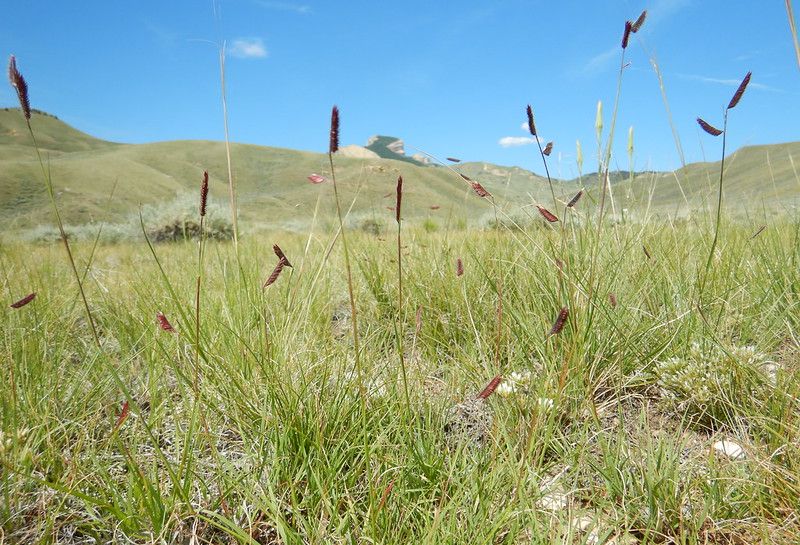
Photo credit: Matt Lavin / Flickr / CC BY-SA 2.0
Blue Grama is another native grass found throughout the Great Plains. It is a slow-growing grass but needs little water to grow, making it a good choice for dry areas of eastern Montana or a low-water-use lawn. While it is tolerant of Montana winters, it doesn’t do well with heavy foot traffic or shady areas.
Classification: Warm-season
Spreads by: Rhizomes
Shade Tolerance: Low
Drought Tolerance: High
Foot Traffic Tolerance: Low
Maintenance Needs: Low maintenance requirements
Mowing Height: Set mowing height at 2.5 inches
Potential for Disease: Low to Moderate. Its most prevalent disease is fungal rust.
Soil pH: 6.6-8.4
Soil Type: Tolerates a wide range of soil textures, including clays and sandy or gravelly loams. Does not perform well in wet, poorly drained soils.
Other notes: Blue grama is often mixed with buffalograss for lawns; the USDA suggests seeding in the spring.
Grass Seed Options:
– Everwilde Farms Blue Grama Grass Seeds (1 lb.)
– Nature’s Seed Blue Grama Grass Seeds (1 lb.)
Choosing the Best Grass Type for Your Montana Lawn
So, what’s the best type of grass for your lawn and climate area? Consider where you live in Montana, then take a look at these grass characteristics to see the best choices for your lawn:
Best Grass Types for Western Montana
- Kentucky bluegrass (for areas outside drought zones)
- Creeping red and Chewings fine fescues (best used in a mix with Kentucky bluegrass).
- Tall fescue (for dryer areas)
- Perennial ryegrass (for areas outside drought zones).
Best Grass Types for Eastern Montana
- Sheep and hard fescues
- Tall fescue
- Buffalograss
- Blue grama
High-, Moderate-, or Low-Maintenance Grasses
What’s your tolerance for mowing? How about fertilizing and watering? Bring it on? Then consider a high- or moderate-maintenance grass. No thanks? Go with a low-maintenance grass.
Moderate-maintenance grasses: Perennial ryegrass and Kentucky bluegrass, though bluegrass needs more fertilizing.
Low-maintenance grasses: Fine fescues, blue grama, and buffalograss, though the latter needs more fertilizer. Tall fescues are considered low maintenance because they need less fertilizer and water. However, it needs to be mowed more frequently.
Drought Tolerance
While they rest in different climate zones, western and eastern Montana have something in common: dry areas. The U.S. Drought Monitor cites drought conditions around the state at the time of writing. If you live in dry areas, your lawn needs drought-resistant grass that can tolerate dry weather and watering restrictions.
High drought tolerance: Tall fescue and fine fescues (depending on cultivar), buffalograss, blue grama.
Moderate drought tolerance: Kentucky bluegrass, tall fescue, and fine fescues (depending on cultivar).
Low drought tolerance: Perennial ryegrass.
High-Traffic Tolerance
How does your family use the lawn? Do you host cookouts — complete with cornhole tournaments? Kids and pets running around? Or do you prefer nice, quiet evenings on the patio? Choosing the right kind of grass will save you aggravation and extra work.
High traffic tolerance: Perennial ryegrass
Moderate traffic tolerance: Kentucky bluegrass, tall fescue, and fine fescues (depending on the cultivar).
Low traffic tolerance: Fine fescues (depending on the variety), buffalograss, and blue grama.
When to Call in a Professional
Are you looking for a Montana lawn care pro near you? Contact one of our trusted lawn care professionals in Big Sky Country. A local pro can keep your lawn cared for and healthy all through the year.
Main Image Credit: Tim Evanson / Flickr / CC BY-SA 2.0
LawnStarter participates in the Amazon Services LLC Associates Program, an affiliate advertising program. LawnStarter may earn revenue from products promoted in this article.

